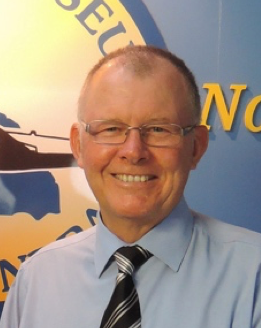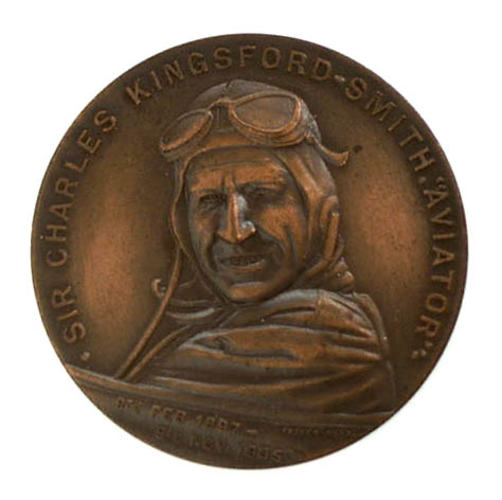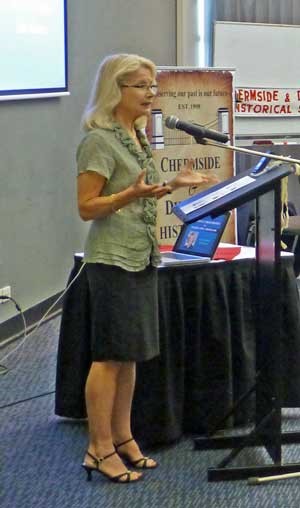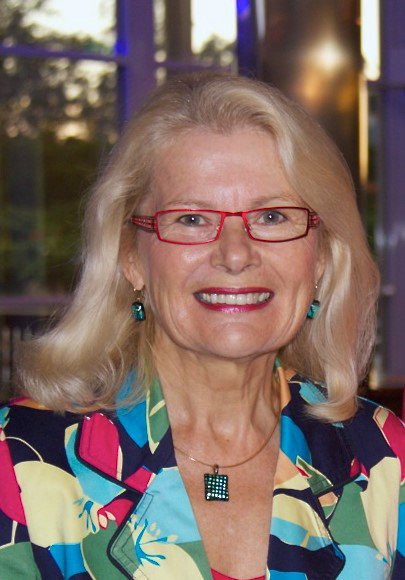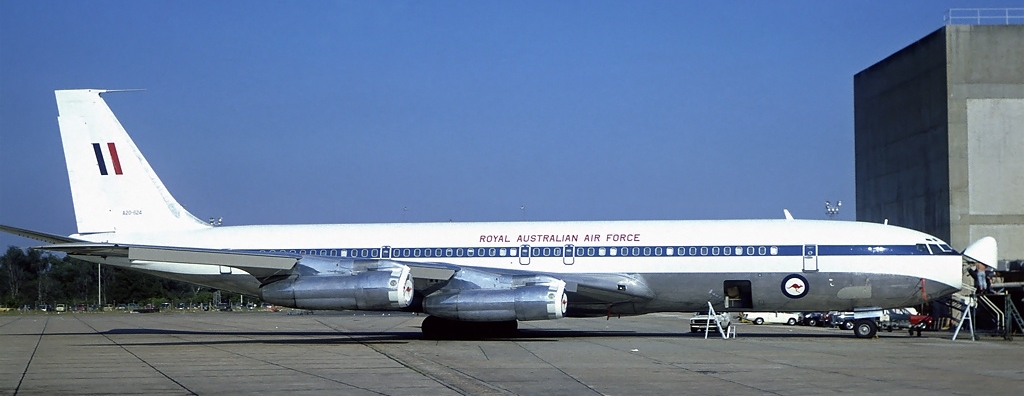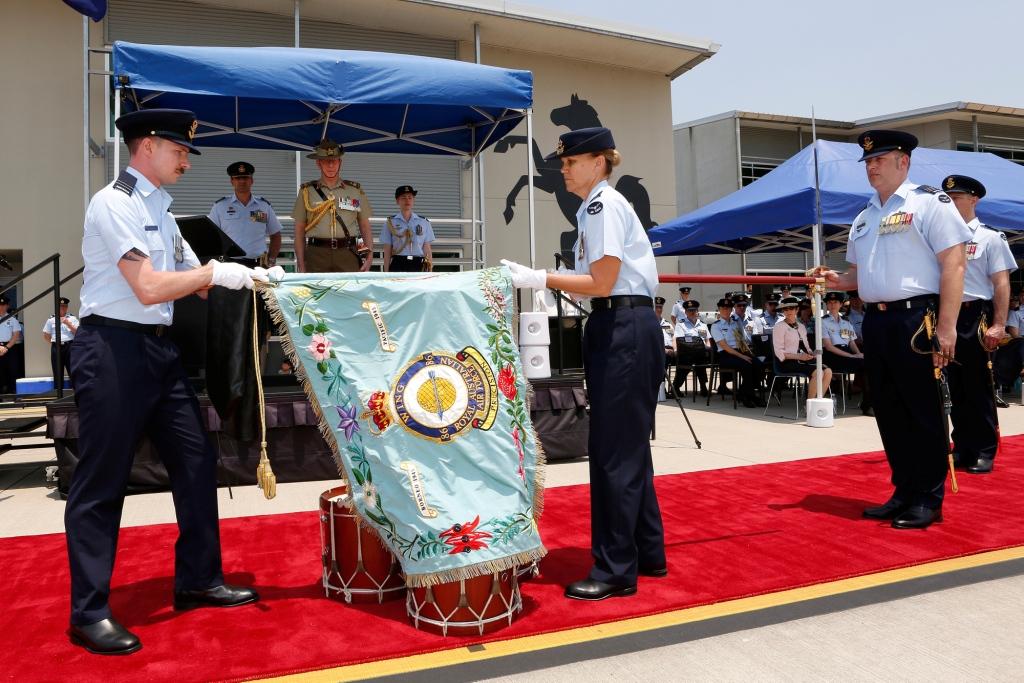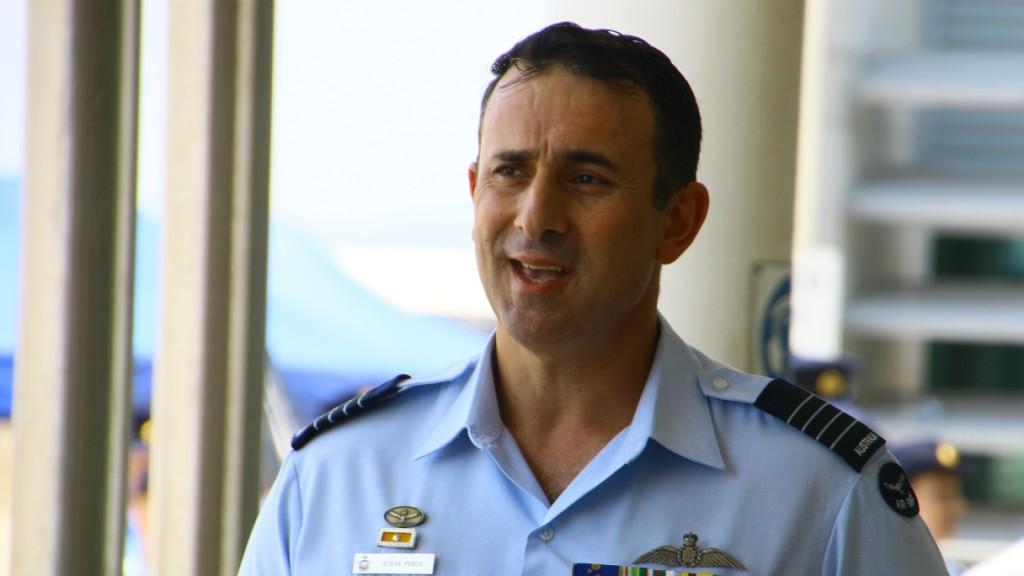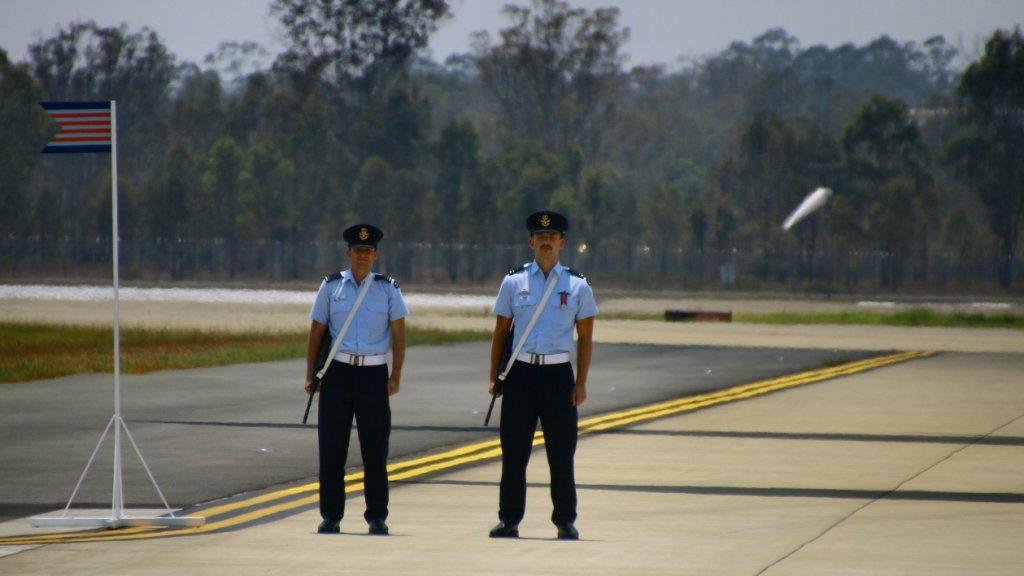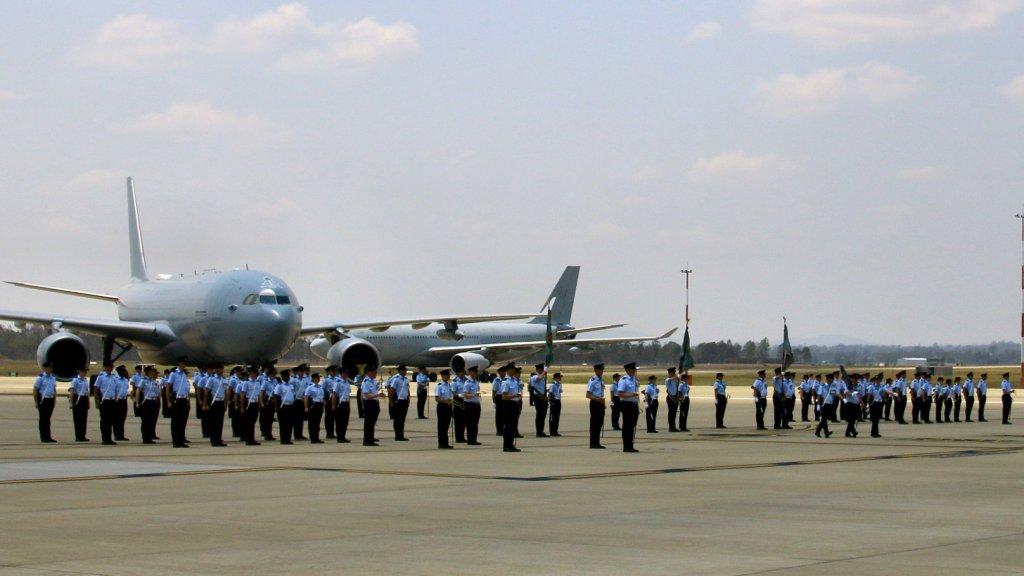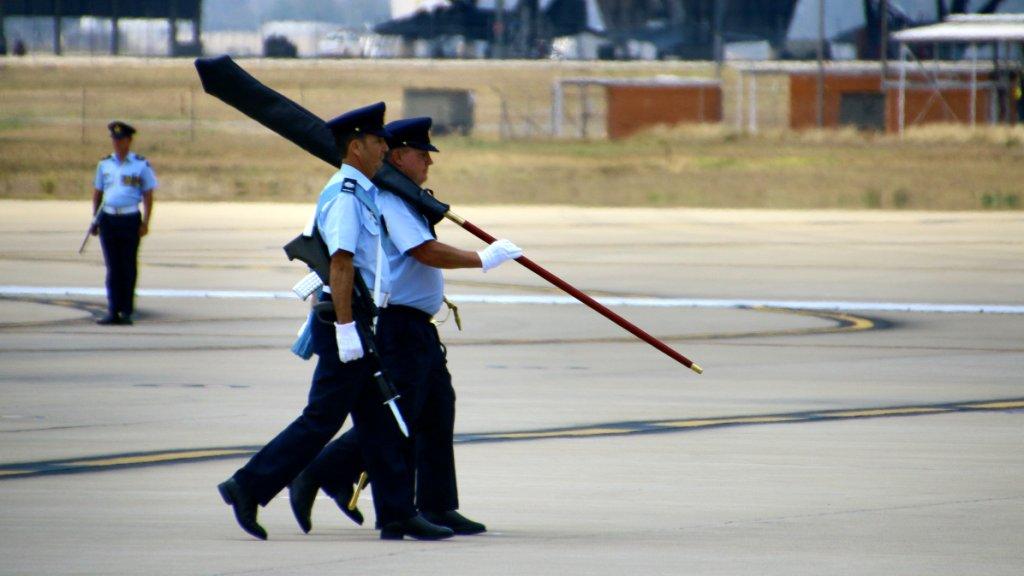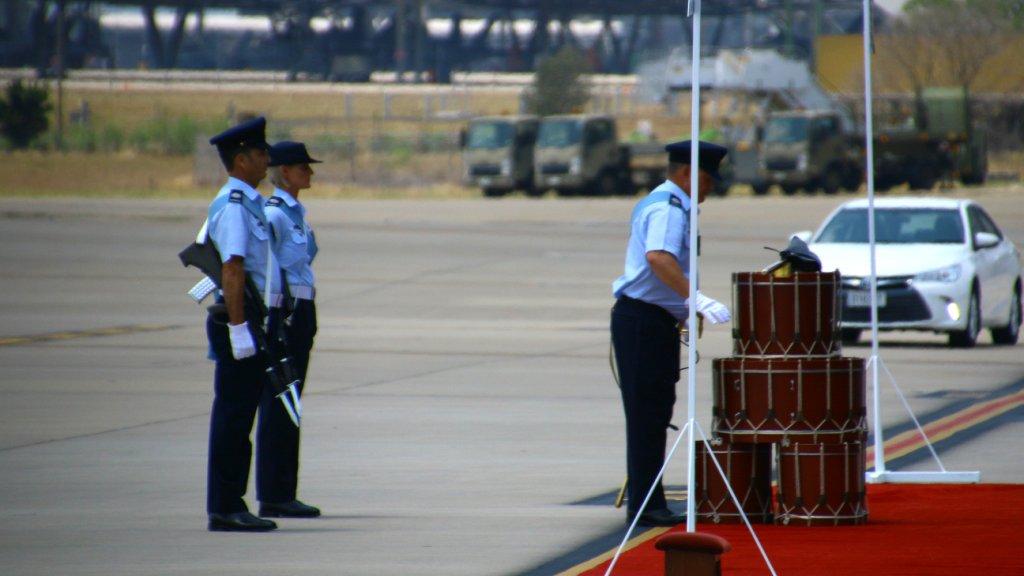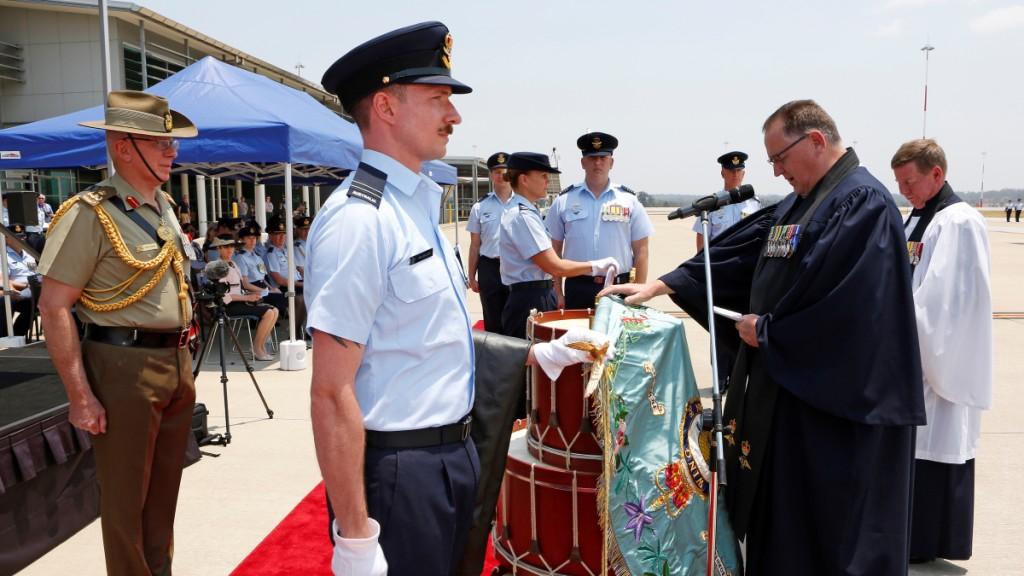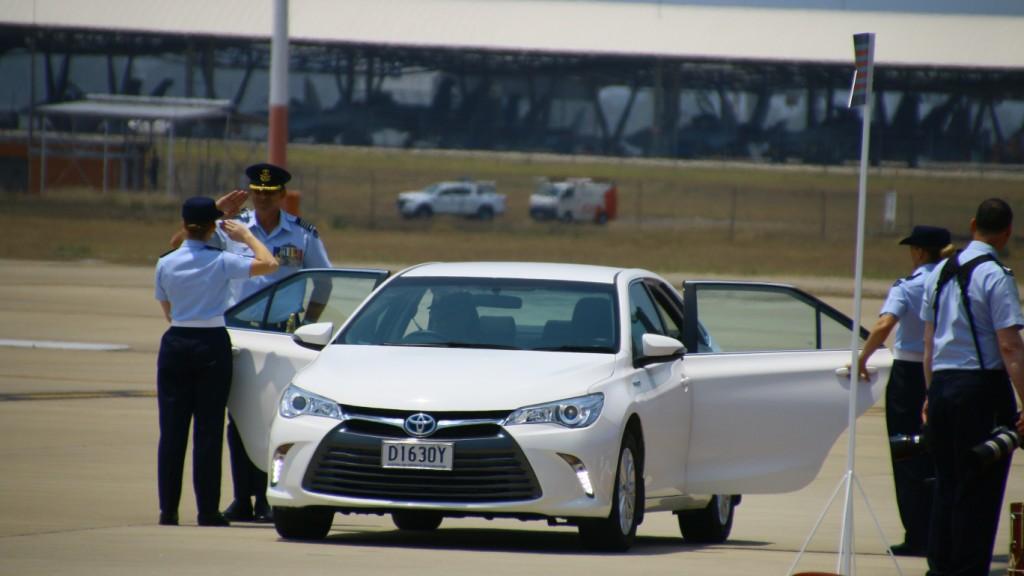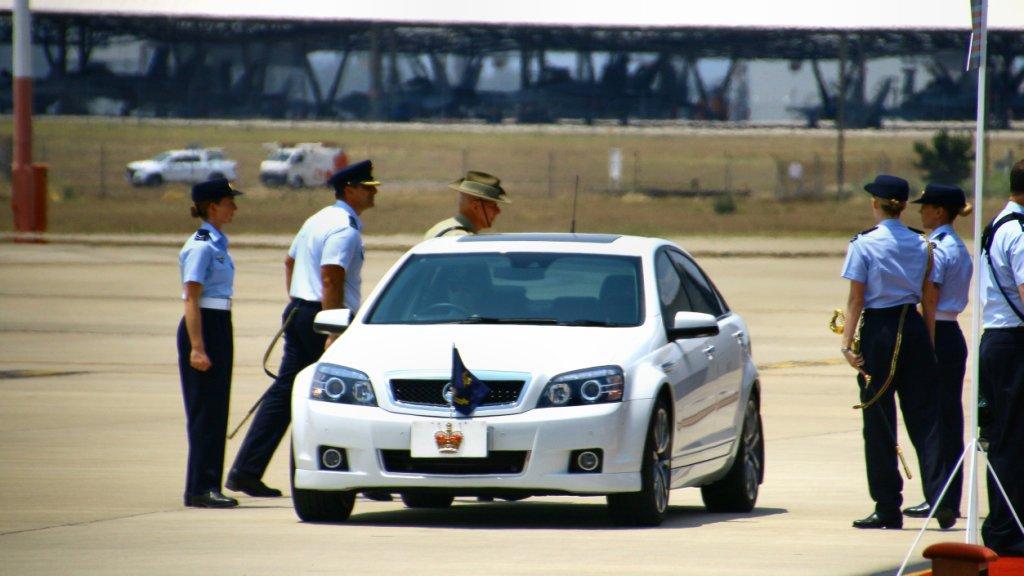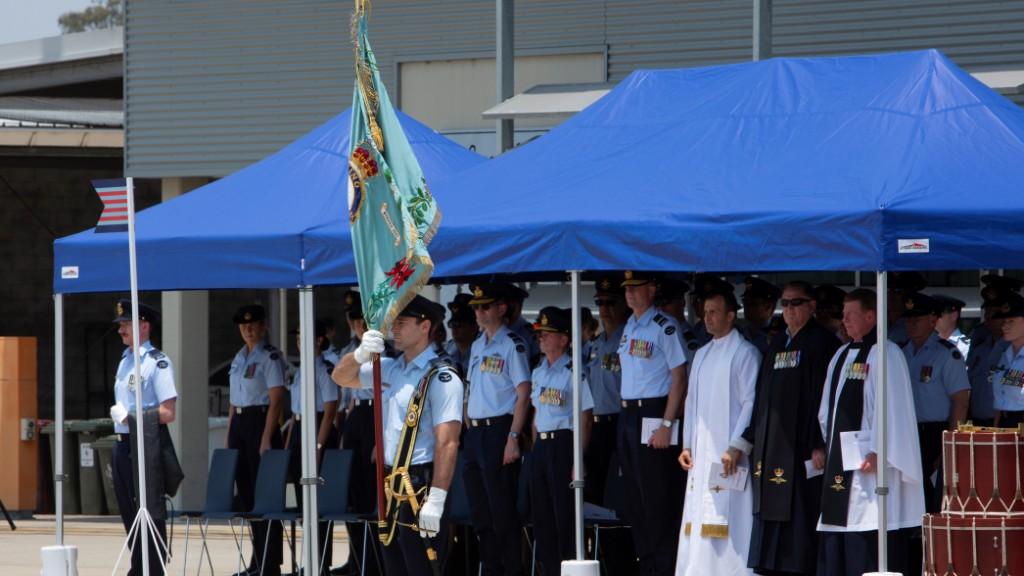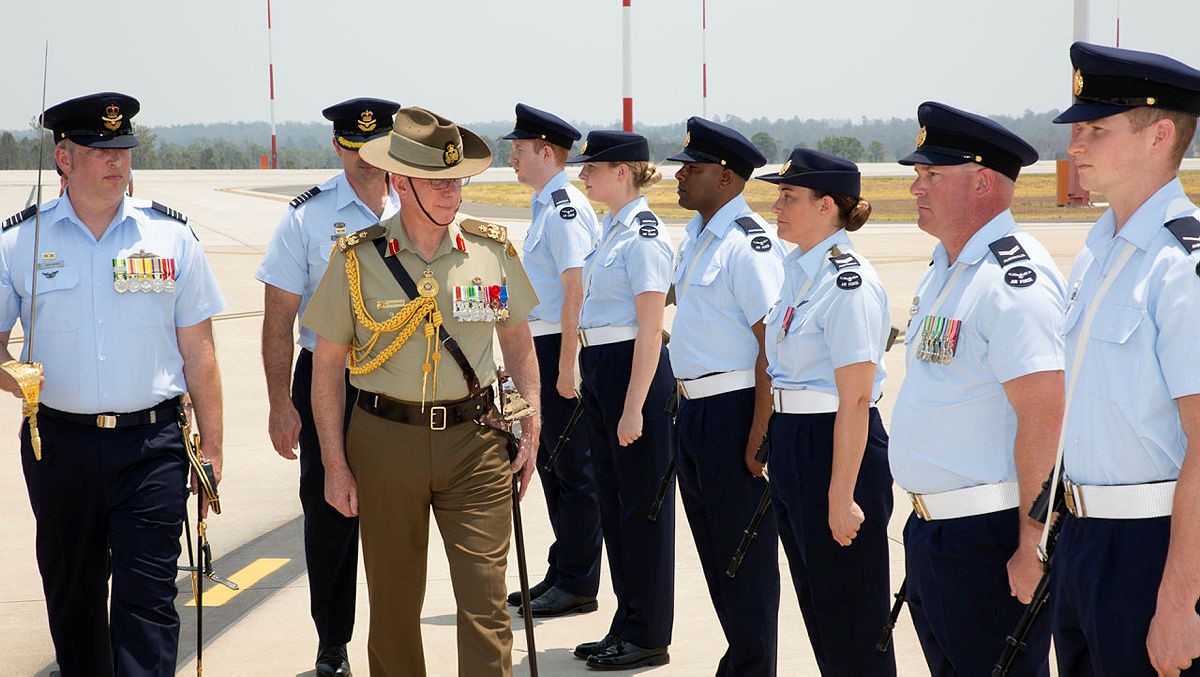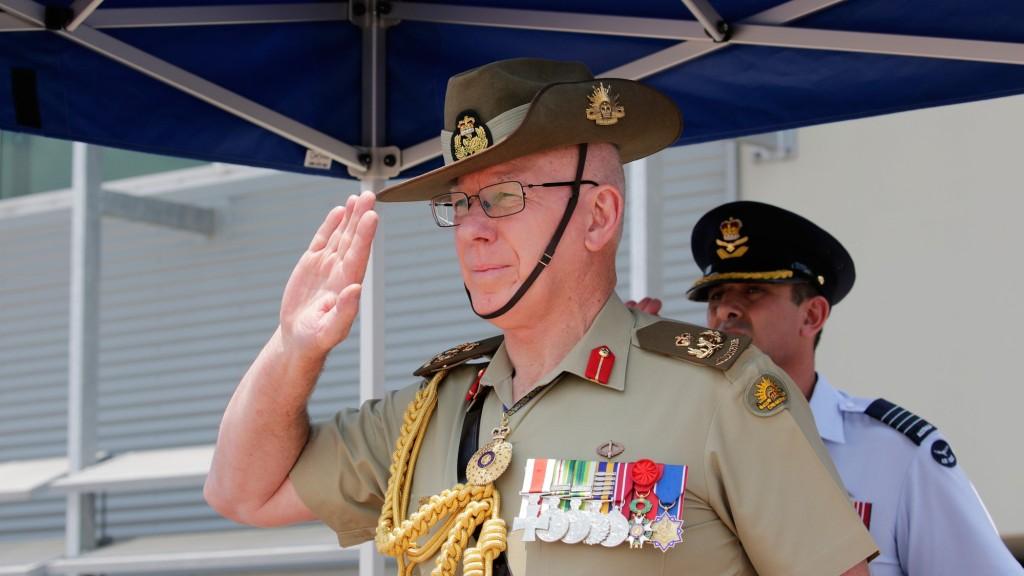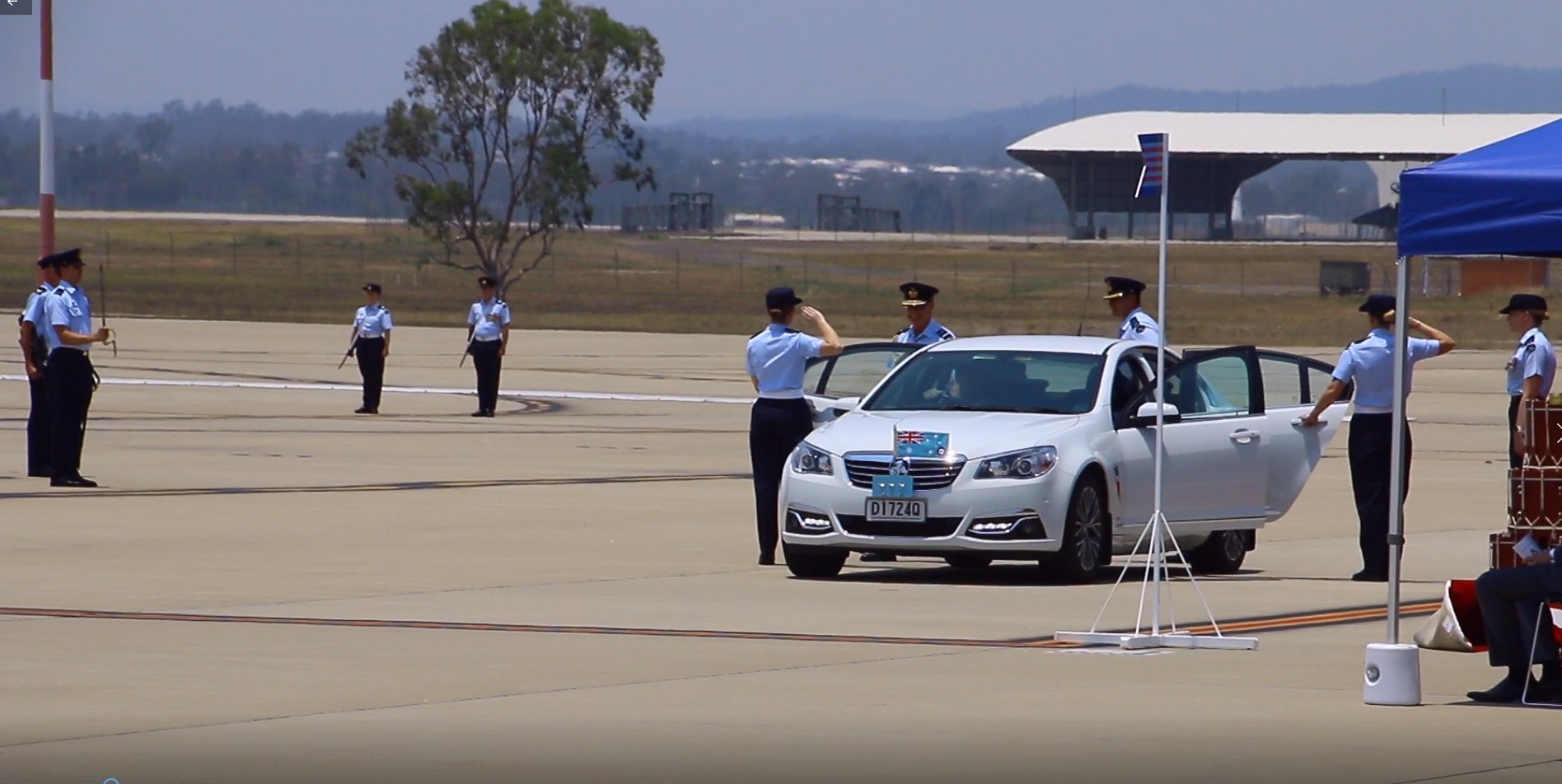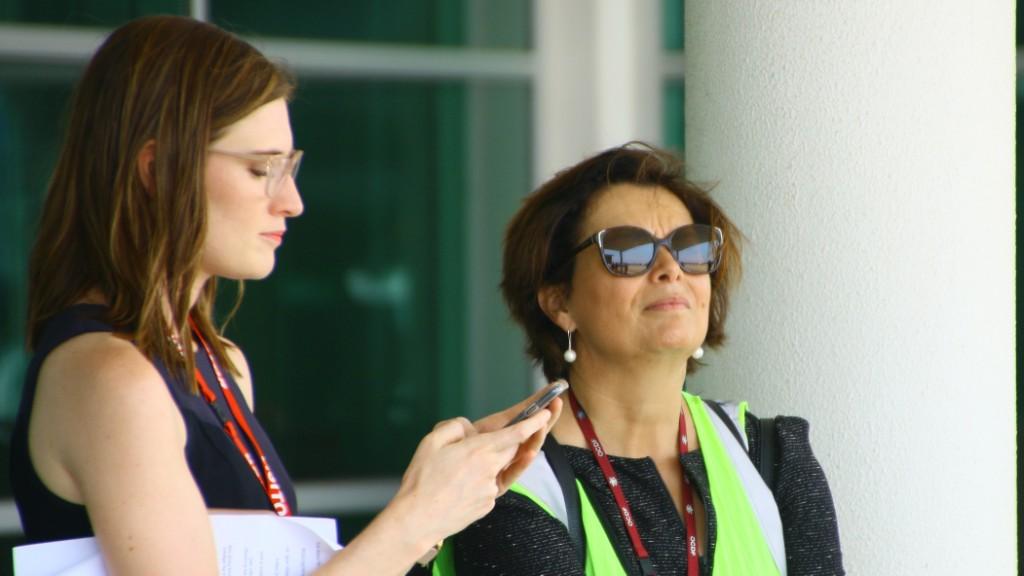|
|
|||||||||||||||
|
|||||||||||||||
|
Privacy Policy | Editorial Policy | Profit Policy | Join the Association | List of Members | Contact us | Index | Links |
|||||||||||||||
|
Back Go to page: 1 2 3 4 5 6 7 8 9 10 11 12 13 14 15 16 17 18 19 20 Forward
|
|||||||||||||||
|
My Story.
|
|||||||||||||||
|
|
|||||||||||||||
|
Contents.
86 Wing receives Queens Standard. The origin of:
|
|||||||||||||||
|
Julie Margaret Hammer was born in the Brisbane suburb of Wavell Heights in 1955. She started school at Wavell Heights Primary School, completed years 8-10 at Brisbane Girls Grammar School, and years 11-12 at Hendra State High School, graduating in 1971. She was placed eighth in Queensland in the Senior Public Matriculation Examination after which she studied physics and mathematics at the University of Queensland, graduating with a Bachelor of Science with Post-Graduate Honours in Physics.
With the new degree under her arm, Julie started looking for a job as a physicist, but back then most people could not even pronounce the word let alone knew what it meant and want to employ one, so in 1977 she joined the Air Force thinking that it would fill in the time for a couple of years while she was 'waiting for a proper job'. This was at a time when the RAAF was opening a number of traditionally male employment areas to women. Even though the WRAAF still existed, Julie signed on as a RAAF Education Officer with the rank of Flying Officer, only the third woman to join the Education Branch. Despite being a RAAF officer, all women were paid on the WRAAF payscale and Julie received only 80% of the equivalent male wage but in May 1977, the WRAAF was disbanded and all its members were incorporated into the RAAF – with, some 12 months later, equal pay with the men.
Julie’s first posting in 1977 was to RAAF Frognall in Melbourne (the RAAF sold Frognall in 1984) as the EDO for the Engineer Cadet Squadron, supervising the library and mathematics bridging courses for the first year cadets. In 1979 she was posted a few kilometers westwards to RAAF Laverton where she instructed in basic electronics, radar, navigation aids and electronic warfare at Radschool until 1981.
By 1981, the Engineer Branch had also been opened to women and Julie transferred to the Electronics Category. Her physics degree had encompassed electronics, transmission theory, electromagnetics, ionospheric physics and other subjects relevant to the then Radio Category of the Engineer Branch. This was a significant turning point for her, as engineering offered a much broader and more interesting career path than education, and she began to think that perhaps she would serve a few more years before 'looking for a proper job'.
In 1982 her first role as an engineer was back in her home state where she took up the position of OIC Avionics (Queer Trades) at 3AD at RAAF Amberley, now with the rank of Flight Lieutenant. 3AD managed deep-level maintenance on the F-111, Iroquois, Chinook, and Canberra aircraft and Julie’s section was on the hangar floor providing the trades for the major depot level servicings. Women were still comparatively rare in such traditionally male areas, rare enough that uniform entitlements still assumed that all female officers would wear skirts. As she remembers, 'it would have been somewhat awkward clambering over aircraft in a skirt,' so the 3AD OC had to send a memo to the Base Commander to request that she be issued with men's trousers. It was during this time that Julie was sidelined to work on a ‘special project’ – to research, draft and publish the 3AD Quality Instructions, the first issued Quality Manual for any RAAF unit. Additional responsibilities included working with the F-111 Pavetack Depot Modification Team preparing for their posting to the USA to assist in and document the Prototype Pavetack Modification.
After two years at Amberley, Julie was posted in January 1984 to the Aircraft Equipment Engineering Division (AEENG3) of Headquarters Support Command at Victoria Barracks in St Kilda Rd. Here she filled the position of a Sub-Section Head (a Squadron Leader position) for 18 months before being substantively promoted into that position in June 1985. AEENG3 was the engineering authority for all fleet avionics equipment and Julie’s section was responsible for F-111, P-3C (including the CMI – Compilation, Mission Support and Integration Facility), Chinook, Iroquois and all Army aircraft.
In 1986 it was off to the UK to commence 16 months full time study on No. 5 Advanced Systems Engineering Course at RAF Cranwell, the Royal Air Force’s Base in Lincolnshire (and the home of the RAF’s Officer Training College). These studies covered Mathematics, Computer Science, Aerodynamics, Propulsion, Aircraft Materials, Control Systems, Guided Weapons, Electronics, Electronic Warfare and Telecommunications, obtaining a Master of Science in Aerosystems Engineering. After a short stint as a liaison officer in the Directorate of Scientific and Technical Intelligence at the Ministry of Defence in London, she returned to Canberra in mid 1987 as a technical intelligence analyst at the Joint Intelligence Organisation.
In 1989, Julie was posted as Project Engineer on Project Air 5140 P-3C ESM. This project was for the design, development, installation, and introduction to service of the improved electronic support measures system, in conjunction with Australian and Israeli contractors. Julie’s role was that of the Design Approval Authority from the stage of contract negotiations to critical design review. As this modification was installing numerous antennae on the aircraft fuselage and most significantly on the wingtips, the P-3C aircraft needed to be recertified and flight tested. In July 1991, Julie was promoted to Wing Commander and took on the position of Project Manager. These duties were undertaken during the period from critical design review to immediately before the first flight test in December 1992. Activities during this period involved preparation of and presentation to the RAAF Airworthiness Board of the design data prior to approval for aircraft certification flights by ARDU.
In 1992, it was off again, this time over to RAAF Edinburgh where she
assumed command of the Electronic Warfare Squadron (EWQSN) at ARDU,
becoming the first woman to command an operational unit of the RAAF for
which she was awarded the Conspicuous Service Cross in the Australia Day
list in 1997. She was also the recipient of the 1996
Association of Old Crows (Australian Chapter) Award for
Distinguished Service to Electronic Warfare. The Electronic Warfare
Squadron is the unit which progra
This position was another significant turning point in Julie’s career. It gave her the opportunity to network and foster relationships with not only many RAAF operational areas, but also with Army and Navy. That knowledge and those relationships stood her in good stead during every one of her future postings, all of which were in joint environments.
When Julie assumed command, this new unit had about 100 members but within a year it grew to some 200 and outgrew the building they occupied so that they had to work in shifts. They were responsible for the development of threat libraries and other operational software to program RAAF and Army EW equipment as well as the provision of specialist EW advice including engineering, intelligence and tactics, to operational flying squadrons. Sensor equipment fitted to these aircraft had to detect such things as missiles aimed at them, the presence of enemy aircraft, enemy radar systems, be able to jam enemy communications, to guide their own missiles and much more. These threat libraries had to be specifically programmed for particular areas of operation and/or specific enemies.
It was during the period of Julie’s command that EWSQN produced the first threat library created in Australia for any airborne platform. This was delivered in July 1993 for the F-111 fleet to use in the Pitch Black Exercise in Darwin. Until then, the old warhorse F-111s were easily overwhelmed by the new F-18 Hornets as the F-111 Radar Warning Receiver was not programmed to detect the F/A-18 radar. The new threat library in the F-111s enabled them to turn the tables; the F-18 pilots were not amused! The OC 82WG, Orange Force Commander for Pitch Black, was impressed and decided he should visit EWSQN the following year to check up on how this new capability was working. (He has been checking up on Julie ever since, and married her in 2000.)
It was also during Julie’s time as CO that implementation of ISO 9000 Quality Management was begun and the Squadron was awarded Third Party Accreditation after the first audit in1996, shortly after Julie’s departure.
Then it was back into the books. Returning to Canberra in 1996, she completed a Graduate Diploma in Strategic Studies at the Joint Services Staff College and was the first woman in the RAAF to become a member of the General List when she was promoted to Group Captain. She subsequently took on the role of Project Director of Joint Project 2030 (JP2030), the ADF’s Joint Command Support Environment (JCSE). This was the project responsible for the design, development and introduction into service of the secret Command and Control network and systems for the strategic and operational level Commanders of the Australian Defence Force and for the tactical level Commanders of the RAAF.
During this period, she was seconded for four months to serve on the Science and Technology Team of the Defence Efficiency Review and also found time to serve for three years from 1996 to 1998 as one of the Prime Minister's representatives on the Governor General's Australian Bravery Awards Council.
In 1999, it was back to the UK where she was the sole Australian student at the prestigious Royal College of Defence Studies in London, completing a 12 month course in strategic and international studies with 83 fellow course members from 38 nations.
Returning to Australia in December 1999, she was promoted to Air Commodore, becoming the first woman to achieve that rank and the first serving woman to be promoted to one-star rank in the ADF. She assumed duties as Director General Information Services, heading up the organisation responsible for the day-to-day operations and support of the Department of Defence strategic communications systems and its restricted and secret computer networks, comprising a staff of 1,500 at 160 locations across Australia. This was at a time when Defence was interconnecting and consolidating what had been many previously diverse and unconnected networks. The challenges associated with that role were significant, and although there were many headaches, Julie found this one of the most rewarding.
It was in 2000 that she married fellow RAAF officer and former Orange Force Commander, Air Vice-Marshal (then Air Commodore) David Dunlop (left).
In December 2001, Julie became the Commandant of the Australian Defence Force Academy, where midshipmen and officer cadets from all three Services undergo their tertiary studies and begin their military leadership training. She had for some time aspired to that position for a number of reasons. Her time at EWSQN had given her a love of ‘command’ roles but more importantly, she wanted to provide a role model, not only for the young female cadets to show them that women can rise to senior rank through professionalism and hard work, but also for the young male cadets, so that they became used to having a female boss from early in their careers. While there she was awarded the Sir Charles Kingsford Smith Memorial Medal by the Royal Aeronautical Society to recognise her contribution to Australian aerospace and in 2001 delivered the Kingsford Smith Memorial Lecture.
Julie’s tenure as Commandant of ADFA was cut short in August 2003 by her promotion to Air Vice-Marshal and her posting into Defence Headquarters to be Deputy Chief Information Officer, responsible for coordinating the strategic direction, capability development, governance, operation and management of the Defence Information Environment, with particular emphasis on military capabilities and interoperability with allies. For the last 12 months of her career, she was the acting Chief Information Officer for the Department of Defence.
Julie's career achievements have been widely recognised. She was appointed by the Minister Assisting the Prime Minister for the Status of Women to be one of Australia's Honouring Women Ambassadors in 2002 and in 2003 became the University of Queensland's 12th Alumnus of the Year. She was awarded the Member of the Order of Australia in 2004 for exceptional service in the fields of electronics engineering in Defence and military education as the Commandant of the Australian Defence Force Academy. In 2005 she was awarded the ACT Australian of the Year and in 2009 was awarded a Doctor of Engineering Honoris Causa by the University of New South Wales to recognise her eminent service to the profession.
For over 28 years, Julie served in the fields of aircraft maintenance, technical intelligence, electronic warfare, and information and communications technology (ICT) systems in the Air Force. At the time of her transfer to the Reserve in August 2005, she was the most senior woman in the Australian Defence Force, the first serving woman in the history of the Australian Defence Force to achieve One Star rank in 1999 followed by Two Star rank in 2003. She reflects that her time in a number of prominent leadership positions were the highlights of her career and hopes that her legacy is to continue having a positive influence on young women.
On retirement Julie became the National Vice President of Engineers Australia, and its National President in 2008, the first female National President in its then 89 year history. Over the last 10 years, she has continued to serve in various voluntary roles within Engineers Australia. She served on the Council of the Australian War Memorial from 2011 to 2013 and was an Independent Director of the .au Domain Administration Ltd, the administrator of the Australian Top Level Country Code Domain, from 2007 to 2016. Internationally, Julie has served since 2012 in a voluntary capacity as a member of the Security and Stability Advisory Committee (SSAC) of the Internet Corporation for Assigned Names and Numbers (ICANN) and became Vice-Chair of that group in 2018. ICANN is the international not-for-profit organisation that coordinates the naming and addressing system of the internet, the Domain Name System.
In 2008 Julie was elected as a Fellow of the Australian Academy of Technological Sciences and Engineering and was appointed an Honorary Fellow of Engineers Australia in 2011. In 2012, she was inducted into the Engineers Australia Queensland Engineering Hall of Fame, and in 2018 into the Associations Hall of Fame. She is included in the recently published book “Anything is possible: 100 Australian Engineering Leaders” to mark the centenary of Engineers Australia.
Throughout her career, Julie has been a visible trail blazer for women in the military both within Defence and beyond and has been a role model for women in engineering and other non-traditional professions. In her frequent public speaking engagements, she focuses on women's contribution in the workplace and the profession and also speaks more generally on leadership. Her message to young women is: "If I can do it, then so can you."
In 2006, concurrent with her voluntary work, she and husband David Dunlop spent a year travelling around Australia in their caravan in search of that ‘proper job’ for Julie. They called themselves 'greying nomads'- not quite old enough to be ‘grey nomads’. It appears that she finally found her ‘proper job’ when they moved into their home on the Sunshine Coast in 2007, as Chief Designer and Tradie’s Assistant doing their own home renovations, a two year project that is still some way from completion - 12 years later. It is reported that she has a very annoying habit of questioning the actions of the Master Tradesman far too often, but continues to do so because sometimes she has been known to save him from disaster!!
In November 2005, Julie was interviewed about her career in the Air Force by Michael Nelms of the Australian War Memorial. You can hear that interview HERE.
|
|||||||||||||||
|
'It's just too hot to wear clothes today,' Jack says as he stepped out of the shower.. Honey, what do you think the neighbours would think if I mowed the lawn like this?' 'Probably that I married you for your money,' she replied. |
|||||||||||||||
|
|
|||||||||||||||
|
86 Wing Amberley receives Queens Standard.
86 Wing is the RAAF’s transport and air-to-air refuelling wing. It comes under the control of Air Mobility Group and is headquartered at Amberley. The wing comprises No. 33 Squadron, operating Airbus KC-30 tanker-transports, 34 Squadron, the VIP Sqn, operating Boeing 737 Business Jets, Dassault Falcon and Bombardier Challenger 604 aircraft and No. 36 Squadron which operates the Boeing C-17 Globemaster III heavy transports. |
|||||||||||||||
|
|
|||||||||||||||
|
Formed in the last year of World War II to undertake ground attack missions in the South West Pacific theatre with de Havilland Mosquitos and Bristol Beaufighters, 86 Wing was reorganised in 1946 as a transport wing headquartered at Schofields, flying the DC3. It relocated to Richmond in 1949 and converted to the C-130A Hercules with 36 Sqn in 1958. Disbanded in 1964, the wing was re-established at Richmond in 1987 and comprised 33 Sqn flying Boeing 707 tanker-transports as well 36 Sqn and 37 Sqn flying the Hercules and 38 Sqn flying the Caribou. 36 Squadron converted to Globemasters in 2006 while 33 Squadron retired its 707s in 2008 and did not become operational with the KC-30 until 2013. 38 Squadron converted to the King Airs in 2009 and was disbanded in 2018.
The Hercules were transferred to No. 84 Wing in 2010 and 86 Wing headquarters relocated from Richmond to Amberley in January 2012.
|
|||||||||||||||
|
Pic: Cpl Colin Dadd RAAF.
|
|||||||||||||||
|
On the 21 November, 2019, 86 Wing, under the command of Group Captain Steve Pesce AM (right), was presented with the Queen’s Squadron Standard by the Governor - General the Honourable David Hurley.
The Squadron Standard is for operational squadrons of the RAAF with more than 25 years’ service or combat distinction. It is made of light blue silk, is 81cm by 121cm in size, and has the Squadron badge in the centre, flanked by small white scrolls inscribed with battle honours arrayed in two rows. If the standard displays an odd number of honours, one scroll is placed below the badge. The field of the flag is bordered by a wreath of roses, thistles, shamrocks, leeks, and wattle in full colour. The pike (pole) is 8 feet 1 inch in length, is topped with a gilt eagle with its wings elevated. The fringe is gold and sky blue, as are the cord and tassels.
Special flags or “colours” have been used as rallying points in battles for millennia and particularly during the Roman Empire where they were awarded and paraded not just for use in war but to show a sense of pride in the unit whenever required!
|
|||||||||||||||
|
|
|||||||||||||||
|
Before the ceremony commenced, the Parade Warrant Officer placed the Parade Markers on the Tarmac to secure the perimeter of the parade ground. This is an age-old custom stemming from battle-field parades where the Holding Squadron protected the parade area from the enemy so the Commander, often the King, could safely address the troops. It was a very warm day and 8 blokes, like the two above, did an excellent job standing motionless, on guard, for the hour or so during the parade.
Well done.
|
|||||||||||||||
|
33Sqn, 34 Sqn and 36 Sqn then marched on and paraded their Colours.
|
|||||||||||||||
|
36SQN being the senior Colour, was consecrated on the 1st April 1971 at Richmond, their battle honours include:
|
|||||||||||||||
|
|||||||||||||||
|
36SQN were presented their Meritorious Unit Citation streamer on Nov 2016 recognising their involvement in Operations Bastille, Falconer, Catalyst and Slipper.
The 34SQN Squadron Standard was consecrated on the 29th April 1973 at Fairbairn, their battle honours include:
|
|||||||||||||||
|
|||||||||||||||
|
The 33SQN Squadron Standard was consecrated on the 2nd June 2010 at Amberley, their battle honours include:
|
|||||||||||||||
|
|||||||||||||||
|
The battle honours for 86WG include the Pacific 1945 and Borneo 1945.
|
|||||||||||||||
|
82 Wing’s cased Squadron Standard was then marched on by the Colour Warrant Officer, WOff Neil Schiller and placed on the piled drums ready for the consecration, blessing and dedication.
|
|||||||||||||||
|
The piling of drums dates back to the 17th century when drums were used as makeshift furniture and in particular as altars, where prayers were conducted both before and after the battle.
For centuries, soldiers about to go into battle prayed and asked for divine help and guidance in what were known to be difficult times ahead. Because of the distances to be covered and lacking any means of transport to take the soldiers to a church, the Regimental Padre conducted the service in the field. This called for a platform upon which he could place his bible and other pieces of equipment he required to conduct a formal service. Lacking any other altar, the regimental drums were put into service by stacking them in layers which then served as a temporary altar. It was in the 1700's that the first recorded use of the Drumhead for this purpose was documented and like many things military, it soon became a tradition. It was used not only for religious services, it also became the table for court martial hearings in the field.
Following the First World War, the British Empire Service League adopted the Drumhead Service in order to foster and keep alive a centuries old tradition.
|
|||||||||||||||
|
Pic: Cpl Colin Dadd RAAF
|
|||||||||||||||
|
The Parade Commander then asked Principal Air Chaplain Mark Willis, Chaplains Peter Friend and Raphael Abboud to consecrate the Squadron Standard for 86 Wing.
The Host Officer, Group Captain Steven Pesce, OC 86 Wing and the Chief of Air Force, Air Marshal Mel Hupfield, AO, DSC and His Excellency. General (Ret’d) The Honourable David Hurley , AC, DSC, Governor-General of Australia arrived on Parade.
|
|||||||||||||||
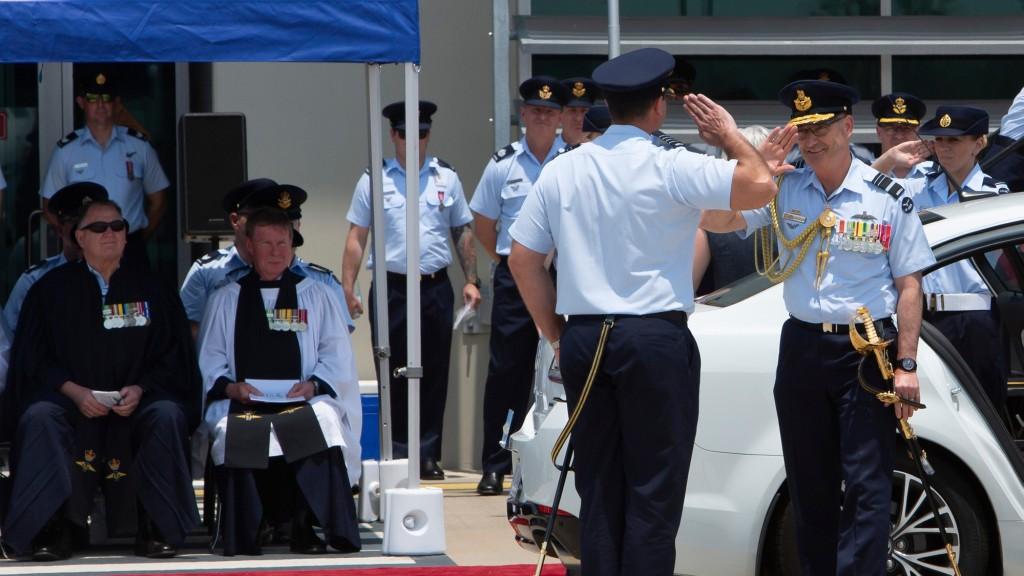 |
|||||||||||||||
|
Pic: Cpl Colin Dadd RAAF
|
|||||||||||||||
|
|
|||||||||||||||
|
Pic: Cpl Colin Dadd RAAF
The Squadron Standard was then uncovered and presented to the 86 Wing Colour Bearer, FltLt James Short who carried the Colour out to the Wing on Parade.
|
|||||||||||||||
|
Pic: Cpl Colin Dadd RAAF
The Governor General then inspected the troops.
|
|||||||||||||||
|
The Wing then marched past (trooped the Colours) with the Governor General taking the Salute.
The origin of Trooping the Colour dates to an ancient ceremony of sending for and the lodging of the Colour. As a ceremony, lodging the Colour has been traced back to the 16th century. A somewhat informal ceremony at first, lodging the Colour gradually acquired precision and dignity. Towards the middle of the 18th century it was an impressive performance, for at this time by order of the Duke of Cumberland, then Commander in Chief, it was definitely associated with, and made a part of the regular parade of mounting the guard.
Today the trooping of a Colour is a formal method of displaying the Colour and is a major part of a Colour presentation ceremony.
|
|||||||||||||||
|
The Chief of Air Force, Air Marshall Mell Hupfield, AO, DSC, departed the parade. (Click the pic), the Consecration Parade was declared closed and everyone was invited to join the Wing in the Air Movements section for light refreshments.
|
|||||||||||||||
|
Thanks to Tina Turner (right), Regional Manager Public Affairs, South Queensland, Department of Defence and to Paul Lineham for their assistance in the preparation of this story.
|
|||||||||||||||
|
|
|||||||||||||||
|
While creating husbands, God promised women that good and ideal husbands would be found in all corners of the world. Then He made the earth round, and laughed and laughed and laughed. |
|||||||||||||||
|
|
|||||||||||||||
|
|
|||||||||||||||
|
|


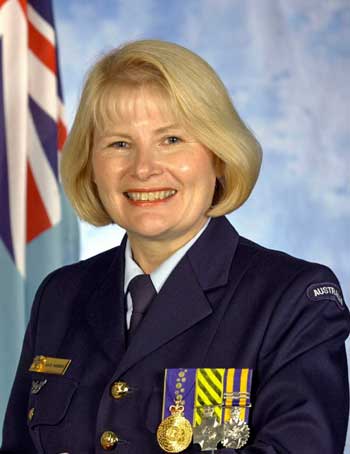
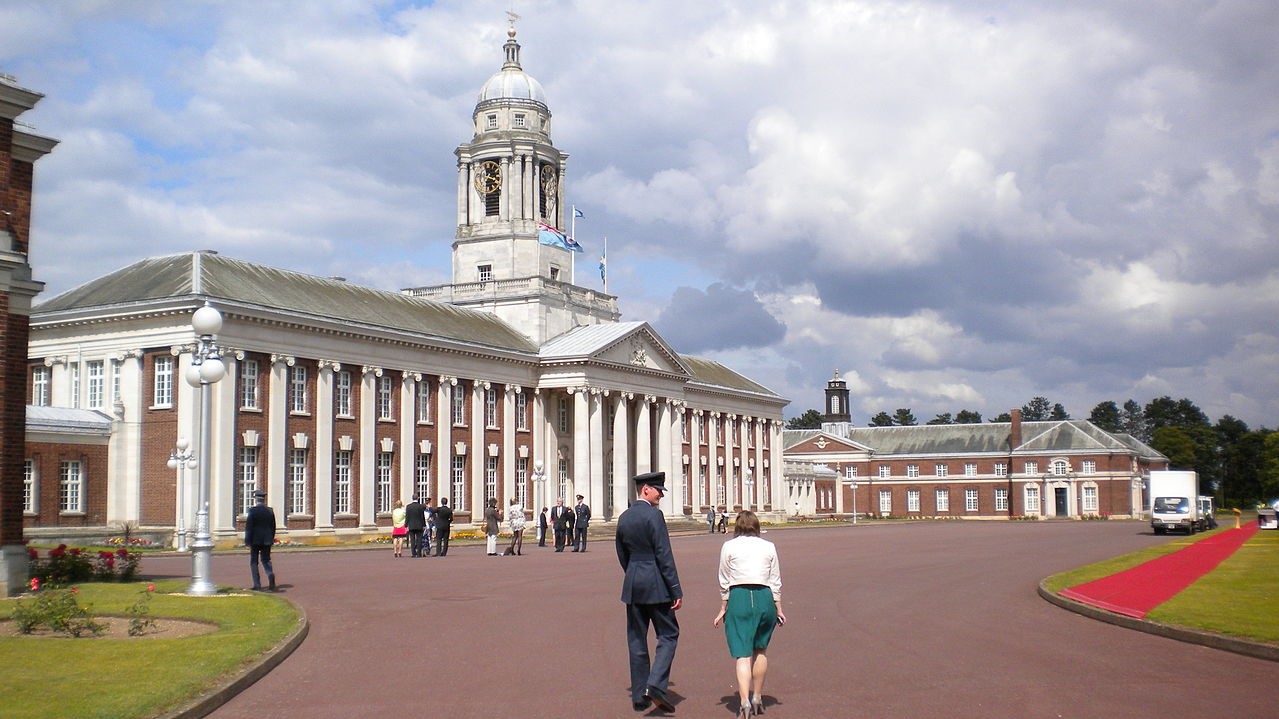
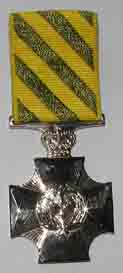
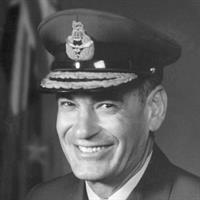 ms
the software and threat libraries in self-protection equipment such as
radar warning receivers, jammers, and flare and chaff dispensers.
Usually this type of command went to aircrew members but Julie was not
aircrew. In applying for the command, she identified what skills and
experience a commander would ideally need to do the job and then set out
to demonstrate that she was the best applicant. She got the job but it
had to go all the way to the top with Air Marshal Ray Funnell (Chief of
the Air Staff from 1987 until 1992) finally making the decision. Julie
has always claimed that it was more controversial that she was an
engineer taking an aircrew job than that she was a female commander.
ms
the software and threat libraries in self-protection equipment such as
radar warning receivers, jammers, and flare and chaff dispensers.
Usually this type of command went to aircrew members but Julie was not
aircrew. In applying for the command, she identified what skills and
experience a commander would ideally need to do the job and then set out
to demonstrate that she was the best applicant. She got the job but it
had to go all the way to the top with Air Marshal Ray Funnell (Chief of
the Air Staff from 1987 until 1992) finally making the decision. Julie
has always claimed that it was more controversial that she was an
engineer taking an aircrew job than that she was a female commander.